Cheongsong Folk Museum (청송민속박물관)
5.4 Km 9111 2022-08-05
222, Juwangsan-ro, Cheongsong-gun, Gyeongsangbuk-do
+82-54-874-9321
Cheongsong Folk Museum was opened in 1999 to promote the history, culture, and customs of the region. The three-story museum offers indoor & outdoor exhibition halls.
The indoor exhibition halls showcase educational materials related to farming and the customs of Cheongsong. Exhibitions - such as the Traditional Guest Room, Weaving Room, Items of Everyday Use, and Cheongsong Porcelain - offer glimpses of how people lived in the past. The outdoor exhibition space reproduces a traditional tavern, waterwheel, millstone operated by a horse or ox, monument to ward off misfortunes and protect prosperity, and natural stones used for worship, with which visitors can experience farm life in the past.
CheongSong folk&Arts Village [Korea Quality] / 청송 한옥민예촌 [한국관광 품질인증]
7.6 Km 6659 2020-12-12
494, Juwangsan-ro Budong-myeon, Cheongsong-gun, Gyeongsangbuk-do
+82-54-874-9098
'Cheongsong Hanok Folk Arts Village is situated within the Cheongsong Tourist Site, which is maintained and operated by the Cheongsong Culture & Tourism Foundation. The Cheongsong Tourist Site consists of the Hanok Folk Arts Village, which is an accommodation houses, Pottery Village, Exhibition Center, Museum, restaurants, and other convenient facilities. The Pottery Village provides a hands-on experience program for visitors who want to try their hand at making Cheongsong white porcelain, a renowned cultural heritage of Cheongsong, and consists of various interesting structures including a dugout hut-type workshop built with rubble and mud. The Exhibition Center consists of the Cheongsong White Porcelain Exhibition Pavilion and the Simsugwan Pottery Pavilion, while the Museum consists of the Folk Exhibition Hall, which displays a variety of Cheongsong’s traditional cultural assets, and the Ggotdol Museum, which exhibits ggotdol (naturally-patterned rocks) found only in Cheongsong. In addition, guests can use the various restaurants, seminar room, sports facilities, and nature trail located within the Cheongsong Tourist Site. Cheongsong Hanok Folk Arts Village is composed of seven hanok houses, namely, Daegamdaek, Yeonggamdaek, Jeongseungdaek, Hunjangdaek, Chambongdaek, Gyosudaek, and Saengwondaek, each of which is named after its principal characteristics. Thus, Daegamdaek, Yeonggamdaek and Jeongseungdaek have many rooms with a courtyard and a wooden floor, while Saengwondaek and Chambongdaek are simple thatched houses. Each hanok house has a different size and structure, and is equipped with high-quality antique furniture made by artisans, and bedding. Cheongsong Hanok Folk Arts Village also has special traditional spaces that are rarely found in other hanok accommodation, including a barn, warehouse, and traditional kitchen that are not currently used but which exhibit the traditional features of hanok. Each house is equipped with a modern bathroom, toiletries, and hairdryer, while communal toilets and a shower room are situated outside the houses.
Songi Garden (송이가든)
7.7 Km 21084 2024-02-13
504 Juwangsan-ro, Juwangsan-myeon, Cheongsong-gun, Gyeongsangbuk-do
054-874-0066
Songi Garden, a Korean restaurant positioned near the Juwangsan Tourist Complex, is celebrated for its healthy cuisine, crafted using fresh, locally sourced produce. The restaurant's standout dish, beoseot jeongol (mushroom hot pot), is particularly noteworthy for its flavorful yet light broth, brimming with an assortment of mushrooms. This culinary experience can be complemented with visits to nearby attractions such as the Cheongsong White Porcelain Experience Center and the Cheongsong Flower Stone Museum, making for a well-rounded exploration of the area's cultural and gastronomic offerings.
Juwangsan National Park (주왕산국립공원)
8.8 Km 52577 2023-03-13
169-7, Gongwon-gil, Cheongsong-gun, Gyeongsangbuk-do
+82-54-870-5300
Juwangsan Mountain (alt. 720.6 m) is located in the Baekdudaegan Mountain Range, the backbone of the Korean peninsula. The mountain features deep valleys and many sheer rock cliffs to make it the third-largest rocky mountain in the country. Juwangsan Mountain was recognized as a tourist attraction on May 30, 1972, and became the 12th national park a few years later on March 30, 1976. The park is relatively small, filling in an area of just 105.582 ㎢ but it is great for a leisure walk with walking trails along the valleys up to waterfalls.
Juwangsan Mountain was called Seokbyeongsan Mountain during the Silla dynasty due to the many stone peaks jutting out but has been called Juwangsan Mountain since the Unified Silla period. In addition to these tall rocky peaks, Juwangsan National Park also includes four waterfalls, caves, Daejeonsa Temple, and other attractions for a comprehensive tourist site.
Daejeonsa Temple (대전사)
9.0 Km 13481 2023-04-17
226, Gongwon-gil, Cheongsong-gun, Gyeongsangbuk-do
+82-54-873-2908
Daejeonsa Temple is said to have been built by Great Monk Uisang in the 12th year of King Munmu’s reign (672). It was rebuilt in the 13th year of King Hyeonjong’s reign (1672) after a fire destroyed the original temple complex during the Imjin War (1592-1598). During work to renovate Bogwangjeon Hall in 1976, a text that had been put up with the ridge beams was found. Bogwangjeon Hall is a small building and its ceiling is in the shape of a Chinese character that symbolize with the meaning "well" or "pavilion" that looks similar to the sharp(#) symbol. A Birojanabul Buddhist statue is enshrined in the hall.
Three Falls of Juwangsan Mountain (주왕산 1.2.3 폭포)
9.5 Km 38475 2024-02-13
24 Sangui-ri, Juwangsan-myeon, Cheongsong-gun, Gyeongsangbuk-do
Above Haksodae Cliff in Juwangsan Mountain lie three enchanting waterfalls. The first of these falls goes by the name of Yongchupokpo Falls, where water gracefully meanders through a gorge, enveloped by encircling rocks. Roughly one kilometer further upstream, you'll encounter Jeolgupokpo Falls, accompanied by the tranquil Seonnyeotang Pond below. To the left of Jeolgupokpo Falls stands the grandeur of Yongyeonpokpo Falls, the largest and most magnificent among them. Yongyeonpokpo Falls is also famously referred to as Ssangyongchupokpo Falls, denoting its two distinct torrents of water ('ssang' meaning 'two,' and 'yongchu' signifying 'pond' in Korean). A well-maintained trekking path welcomes visitors, allowing them to explore and ascend to witness these three falls, with a gentle incline that is easily traversed by visitors of all ages.
Cheongsong Yasong Art Gallery (군립 청송야송미술관)
9.9 Km 13513 2021-07-07
5162, Gyeongdong-ro, Cheongsong-gun, Gyeongsangbuk-do
+82-54-870-6536
The Cheongsong Yasong Art Gallery opened on April 29, 2005. The art gallery exhibits 350 Korean paintings and pottery works of Yasong Lee Won-jwa, who is a traditional Korean painter native to Cheongsong. Also on display are around 50 works of noted painters and sculptors from in and out of Korea, and over 10,000 art books, all of which have been donated to the gallery. The two-story building was formerly Sinchon Primary School, which was remodeled into an art gallery after its closure.
Marnbauchon Garden (만바우촌가든)
10.0 Km 21595 2024-02-13
5173-17 Gyeongdong-ro, Jinbo-myeon, Cheongsong-gun, Gyeongsangbuk-do
054-872-2263, 2264
Marnbauchon Garden, a Korean restaurant nestled near Juwangsan National Park and Dalgipokpo Falls in Cheongsong, offers a delightful culinary experience. The star of their menu is the dak baeksuk, a wholesome whole chicken soup. This delectable dish is crafted by simmering Juwangsan Sinchon mineral water, renowned for its rich mineral content, along with medicinal ingredients like ginseng, jujube, and mung beans. In addition, the restaurant boasts an inviting open-air yard and bungalow facilities, providing a serene setting where patrons can unwind and partake in various activities following their meal.
Jirye Arts Village (지례예술촌)
12.7 Km 28454 2020-04-02
427, Jiryeyesulchon-gil, Andong-si, Gyeongsangbuk-do
+82-54-852-1913
Located in Andong, Jirye Arts Village first formed as a result of the construction of Imha Dam. When a small neighborhood in Jirye-ri, Imdong-myeon was at the risk of flood due to the dam, Kim Won-gil, the current village leader, relocated and rebuilt ten houses to its current location in 1986. This neighborhood, now known as Jirye Arts Village, was designated as an art village in 1990 and since then, many artists settled in the neighborhood and formed a community of culture and art. Today, Jirye Arts Village offers a variety of opportunities to experience Korean culture through hands-on arts and crafts as well as diverse cultural activities.
Manhyujeong Pavilion (만휴정)
13.2 Km 19074 2023-01-18
42 , Mukgyehari-gil, Andong-si, Gyeongsangbuk-do
+82-54-852-6800
Manhyujeong Pavilion is the pavilion of Bobaekdang Kim Gye-haeng and was built in 1500 (6th year of Yeonsangun). The present building shows a modified appearance through remodeling, and only a part shows the style of the late Joseon dynasty. Kim Gye-haeng was a civil servant in the early Joseon dynasty and held various government posts. However, when he met the tyranny of Yeonsangun, he abandoned the government post and returned to his hometown. After that, a small pavilion was built along Seolmot (currently Sosan 2-ri), but since it was next to the road, he built Manhyujeong Pavilion in a quieter place. If you cross the stream from Mukgyeseowon Confucian Academy in Giran-myeon and enter the mountain, you can find it located in a magnificent valley that faces southeast and has a waterfall flowing over the rocks.
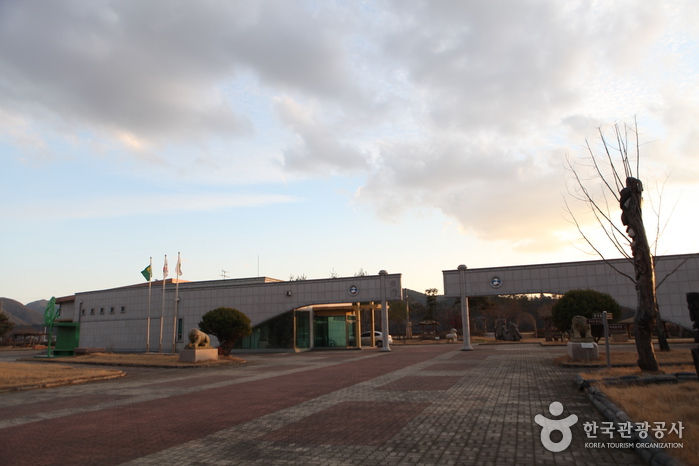
![CheongSong folk&Arts Village [Korea Quality] / 청송 한옥민예촌 [한국관광 품질인증]](http://tong.visitkorea.or.kr/cms/resource/14/2048414_image2_1.jpg)
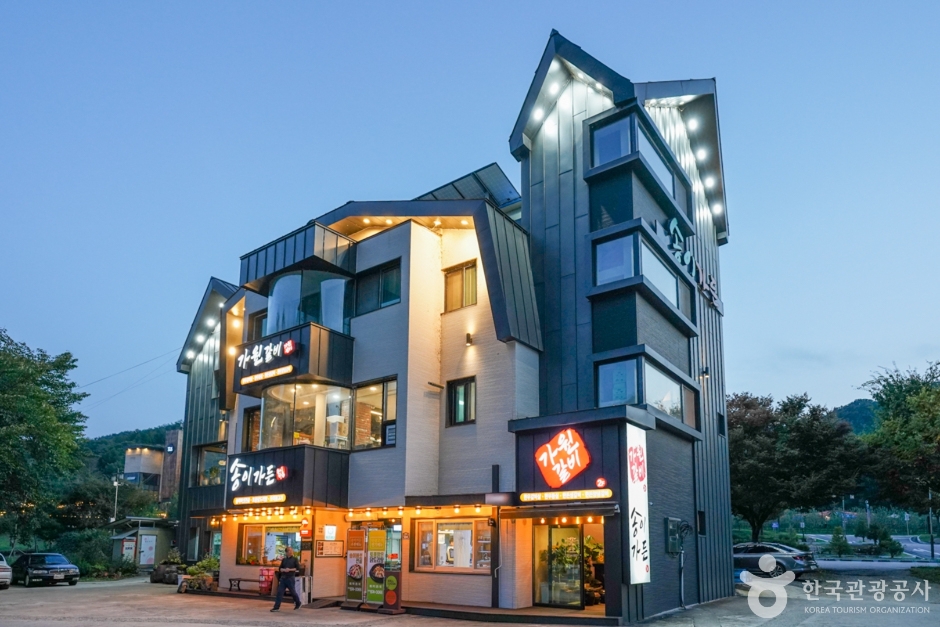

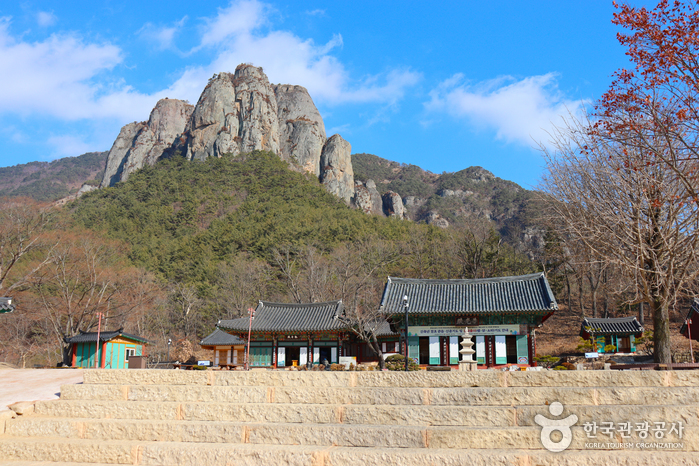
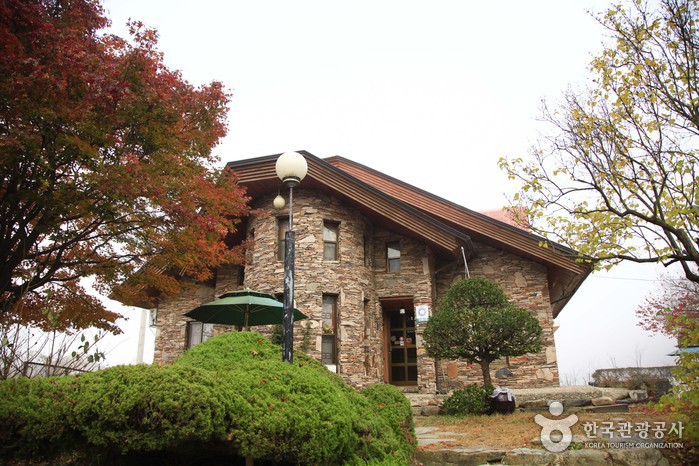
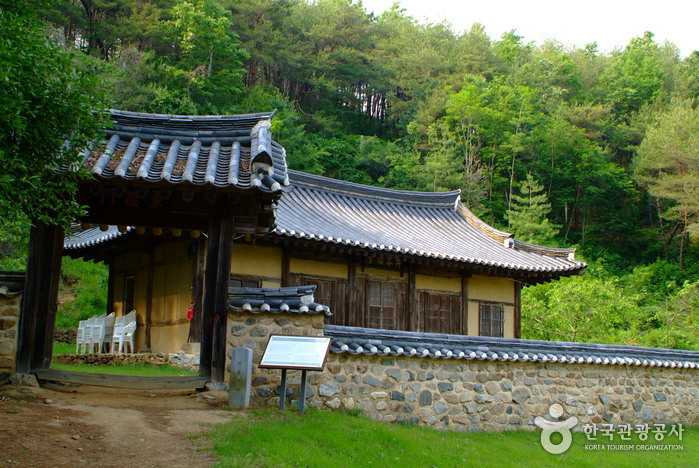
 English
English
 한국어
한국어 日本語
日本語 中文(简体)
中文(简体) Deutsch
Deutsch Français
Français Español
Español Русский
Русский